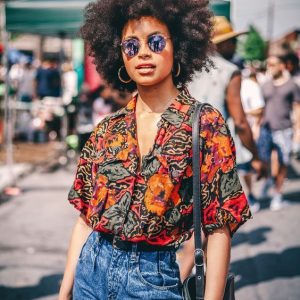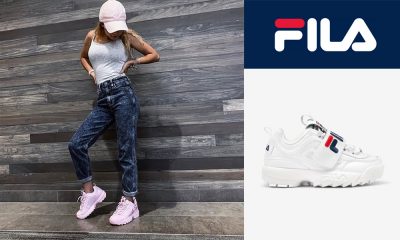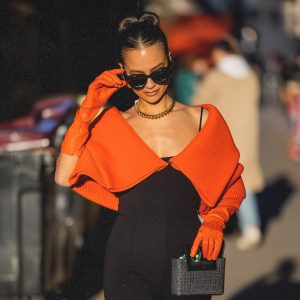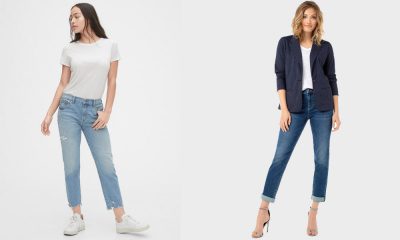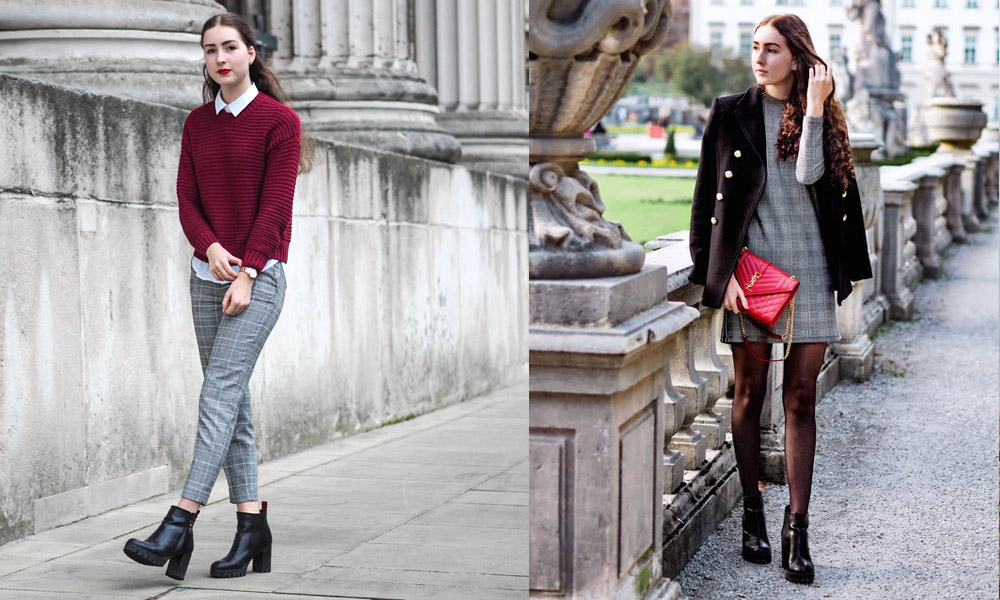
It doesn’t matter if you’re wearing designer clothes. If the colors in your outfit don’t go well together, you’re not going to pull off a stylish look.
Fortunately, learning how to mix and match colors in your wardrobe is easier than you think. In this guide, we’ve pulled together the best ways to get your colors right.
Ready? Let’s get to it!
Understanding Color Theory & The Color Wheel
Your journey to getting in style starts with understanding color theory.
Color theory is what fashion designers use to mix, match, and manipulate colors. Using color theory, they can desaturate and create new colors through shades, tones, mutes, and tints, make a color lighter, duller, or muted, and experiment on combinations of warm and cool colors to achieve a particular effect.
While you don’t need to be an expert on color theory, some basic knowledge about the color wheel goes a long way.
Matching Colors Using the Color Wheel
The color wheel is anchored by three primary colors: red, yellow, and blue. You can mix any two of the primary colors to form secondary colors: green, orange, and purple. Meanwhile, combining a primary color with a secondary color results in a tertiary color.
Aside from color combinations, designers also use “color temperature” which describes a color in terms of how “warm” or “cool” it is.
Lastly, they use “neutral colors” like shades of black, white, cream, ivory, and gray. These are the colors you won’t see in a typical color wheel as they lack or have very little color pigment.
Principles for Matching Colors
Before we jump into the tips and tricks for matching colors, there are a few principles you should keep in mind:
Analogous Colors
Colors that are next to each other on the color wheel are called “analogous” colors. They are perceived as similar despite being based on different wavelengths of light.
An analogous palette is a great way to introduce new colors to your wardrobe while sporting a clean and refined look.
Complementary Colors
Another color theory you should embrace is complementary colors. These are colors that are directly opposite on the wheel, such as red and green, yellow and purple, or blue and orange.
They might seem bold to look at, but these colors make “perfect” pairs in any given outfit and are very popular in spring and summer clothing.
Complementary colors are great additions to your wardrobe if you’re comfortable making bold statements in your outfits.
Triadic Colors
When you pick three colors that are equally spaced on the color wheel, you get a triadic scheme. Like a complementary color scheme, triadic is also a very contrasting color combination but looks very stunning and fashionable.
Tips To Match Colors in Your Clothes
With some basic knowledge of color theory, now is the time to experiment with matching colors in your outfits. Check out these tips:
Add a Pop of Color
An easy way to pull off a stealing outfit is to incorporate a hint of bright, attention-grabbing color. So, if you feel like wearing a neon jacket or a bright orange shirt, keep the rest of your base outfit (shirt, pants, or shoes) in neutral hues.
Remember not to go too far when adding a pop. A little goes a long way. Also, add a pop of color to no more than two places in your outfit.
Balance Bright Pieces With White
Bright colors such as yellow, orange, pink, and red, work beautifully with white.
The reason is that white balances the warmth and brightness of these colors, creating a more refined and elegant look.
This color combo applies to accessories too. This means you can spiff up a white outfit and accessorize with bright pieces. Beautiful.
Pull off a Monochrome Look
While a monochromatic outfit may look easy to create, it can be a bit tricky to get right, especially if you’re choosing a brighter color palette or incorporating neutrals.
The best way to create a fashionable monochromatic look is to wear different shades and tints of the same color.
For example, you can start with a pale yellow blouse, then mustard yellow pants, and yellow shoes.
Strive to achieve balance when combining pieces. It’s a rule for every outfit, not just for monochromatic clothes. You should also select a color palette that looks great on your skin and hair tone.
If you’re new to monochromatic outfits, you can start with dark neutrals like black, navy, brown, and gray.
Wear Solid Colored Outfits
Solid colors are perhaps the easiest to style, which makes them a fantastic go-to color scheme for both men and women.
Thus, if you’re opting to have a minimalist and functional wardrobe, invest in high-quality clothing in solid colors. They’re also a great way to create a professional and elegant look without being distracting.
There are different ways to pull off amazing outfits using solid pieces. One is by sticking to one solid color, such as a navy blouse and navy trousers. It’s a clean and casual look that makes you appear taller and thinner.
Another approach is the tone-on-tone outfit wherein you choose a slightly different tone for your top, such as navy pants and a light blue shirt. You can also pair a solid color top with a neutral bottom, such as a burgundy shirt and grey pants.
Now, the best way to add drama or interest to your ensemble is to use accessories in an entirely different color. Perhaps, match a solid blue outfit with a pair of red statement earrings or a chunky red bracelet.
Strive for Balance
Matching colors can be complicated because you have so many options (shades, tints, and tones) to choose from. For example, red can come in very light tones like pastel or it can be very bright and vivid.
The key to balancing colors is to NOT overdo it in either direction.
That said, if you choose to wear a bright piece, tone it down with a neutral base. In the same way, wearing a pale color such as pastel can be balanced by adding a solid color to your ensemble.
If you’re wearing complementary colors such as red and blue, consider incorporating something white, such as a white shirt underneath a tailored red jacket, paired with navy jeans. It’s the perfect contrast between the brightness of red and blue.
Embrace Pastel Colors
A fashionable wardrobe is incomplete without a dash of pastel colors. Soft hues are timeless colors that go with any season besides being classic spring staples.
There are different ways to wear pastel, such as:
- Wearing something monochromatic.
- Pairing a few different pastel colors for a soft yet bold look.
- Making the pastel color pop by keeping the rest of the color in your palette simple.
- Adding a little “edge” to the softness of your pastel pieces with bright, fun accessories.
Match Stuff That Matters
Colors play a major factor in your outfit, but they aren’t all that matters.
To pull together an amazing look, you have to take into account the individual styles of your outfit, including your shoes and accessories.
For example, if you’re wearing an oversized piece, keep the rest of your outfits a little tighter. Thus, if you’re wearing a tulle skirt, you should pair it up with a tight top. Or, if you’re wearing an oversized shirt, balance it out with a pair of skinny pants.
Wear One Thing at a Time
Fabrics add dimension and unique character to your outfit. They can be mixed and matched, or paired with similar textures. Some of your go-to textures include cotton, denim, leather, suede, corduroy, broadcloth, cashmere, jersey, and flannel.
Mixing and matching textures are similar to patterns and prints. Simpler textures serve as a natural base for wilder textures.
When it comes to footwear, your options include leather, rubber, and textiles. Women’s leather shoes pair beautifully with either casual or formal outfits, as long as you pick the right colors. It’s safe to go with brown or black leather kicks as they work well with most outfits.
If you want something a little different, consider nude shoes. They are a great alternative to black and pairs nicely with white, cream, gray, and blush outfits. They also look fantastic when paired with bolder accessories, such as red, blue, or orange statement pieces.
Sticking to a more limited color palette allows you to play with different textures in your outfit. However, it doesn’t mean that you should just dress in monochrome. Consider using neutral colors to anchor your look, or choose two or three solid hues that work together.
When it comes to accessories, choose colors that pair with your top or shoes. So, if you’re wearing a pair of black sandals, choose a black purse or a black handbag. If you’re wearing leather shoes and a leather belt, make sure their colors match as closely as possible.
Summary
Colors can make or break your outfit, so you must understand how to mix and match colors properly.
Start by combining colors using the color wheel. Analogous, complementary, and triad combos should help you pull off fashionable looks, along with monochromatic schemes, pastels, neutrals, and solid colors.
Note that the colors in your outfit don’t necessarily have to match, rather, they have to complement. The same thing with accessories, textures, and patterns.
By following the tips we just shared, getting in style will be so much fun and easier! Subscribe to get more fashion ideas on herstylecode.com!
